Drums are percussion instruments, and in the Hornbostel Sachs Classification System Trusted Source By Instrument - UW Ethnomusicology Archives - Library Guides at University of Washington Libraries Membranophones are instruments that produce sound by vibrating a membrane. The Hornbostel-Sachs system divides membranophones into five categories: struck membranophones, plucked membranophones, friction membranophones, singing membranophones, and other membranophones. guides.lib.uw.edu , this musical instrument is a membranophone. This musical instrument produces sound with the vibration of a stretched membrane.
Different types of drums produce a range of sounds. Hence, they are used for various purposes.
This guide will list and describe all types for you to learn. So scroll down to understand the different types of drums and what purpose they have in music.
Drums & Their Brief History
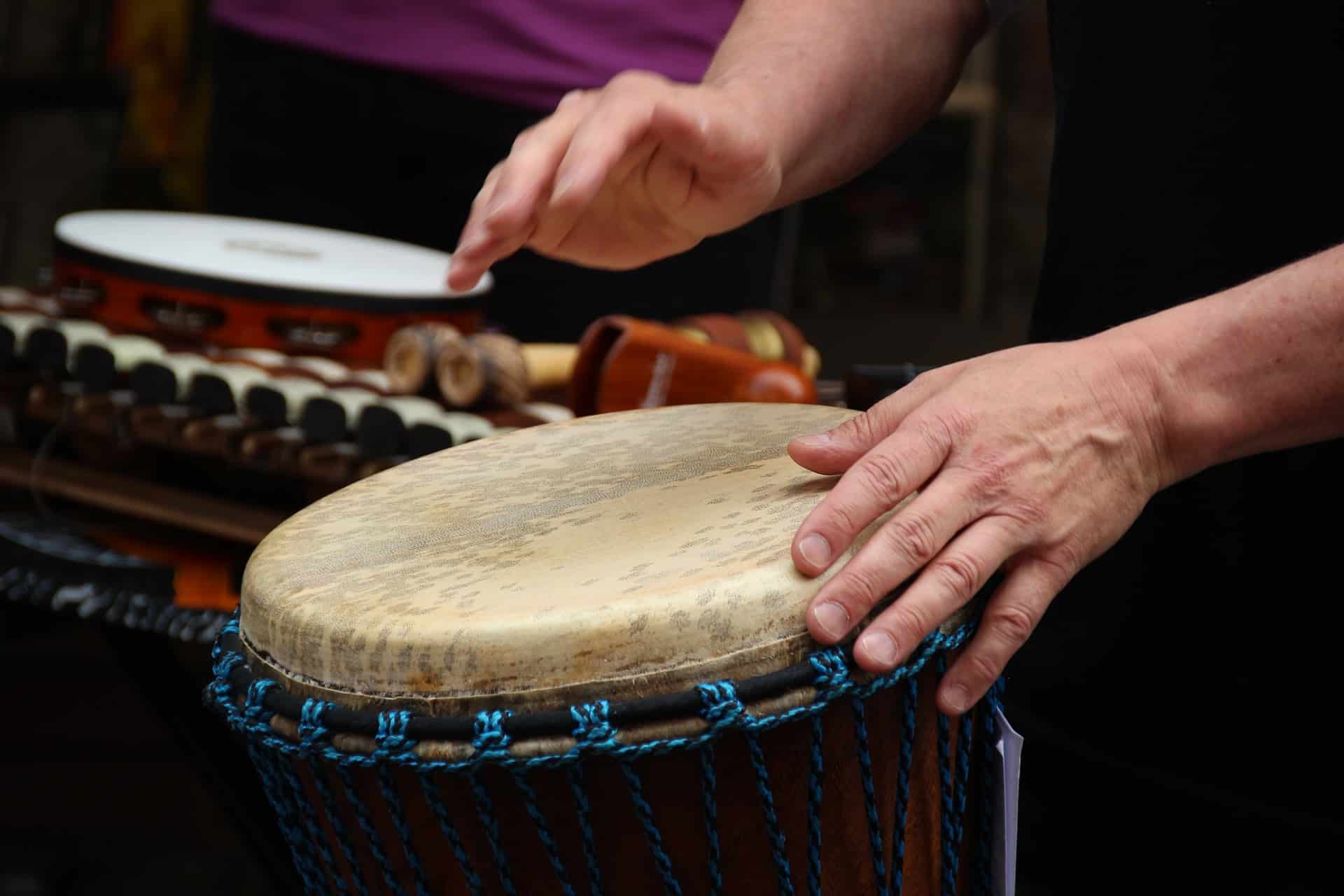 This musical instrument can create sound when you strike its stretched membrane either with your hands or with another object, which in most cases is a stick or a mallet.
This musical instrument can create sound when you strike its stretched membrane either with your hands or with another object, which in most cases is a stick or a mallet.
The most interesting thing about this musical instrument is that playing drums can reduce stress hormones in your body if you do it recreationally.
These musical instruments appeared in 6000 BC and played an integral role in celebrations, religious ceremonies, and other social affairs in different cultures.
This instrument features a membrane stretched over one end and has different tuning pegs and keys to loosen or tighten the membrane to produce different sounds. This membrane creates the sound, contrary to the myth that the drum’s body creates the sound.
Back then, real drums were made with membranes developed from skins of different animals. In the past, more than one person was required to control drums in orchestras. The drum sets with the modern-day configuration were developed early in the 20th Century.
Since 1920, soft brushes have been used to create softer drumming sounds, and in the 1930s, the current shape of the drum kit was developed.
Different Types of Drums
The world of percussion and drums is ginormous, and it can be pretty intriguing for you to explore. We will list down the basic groups of drums and then explain and categorize them into further types. So let’s begin,
- Drum sets
- Frame drums
- Hand drums
- Marching band drums
- African drums
- Orchestra drums
Drum Set Types
Acoustic Drum Sets
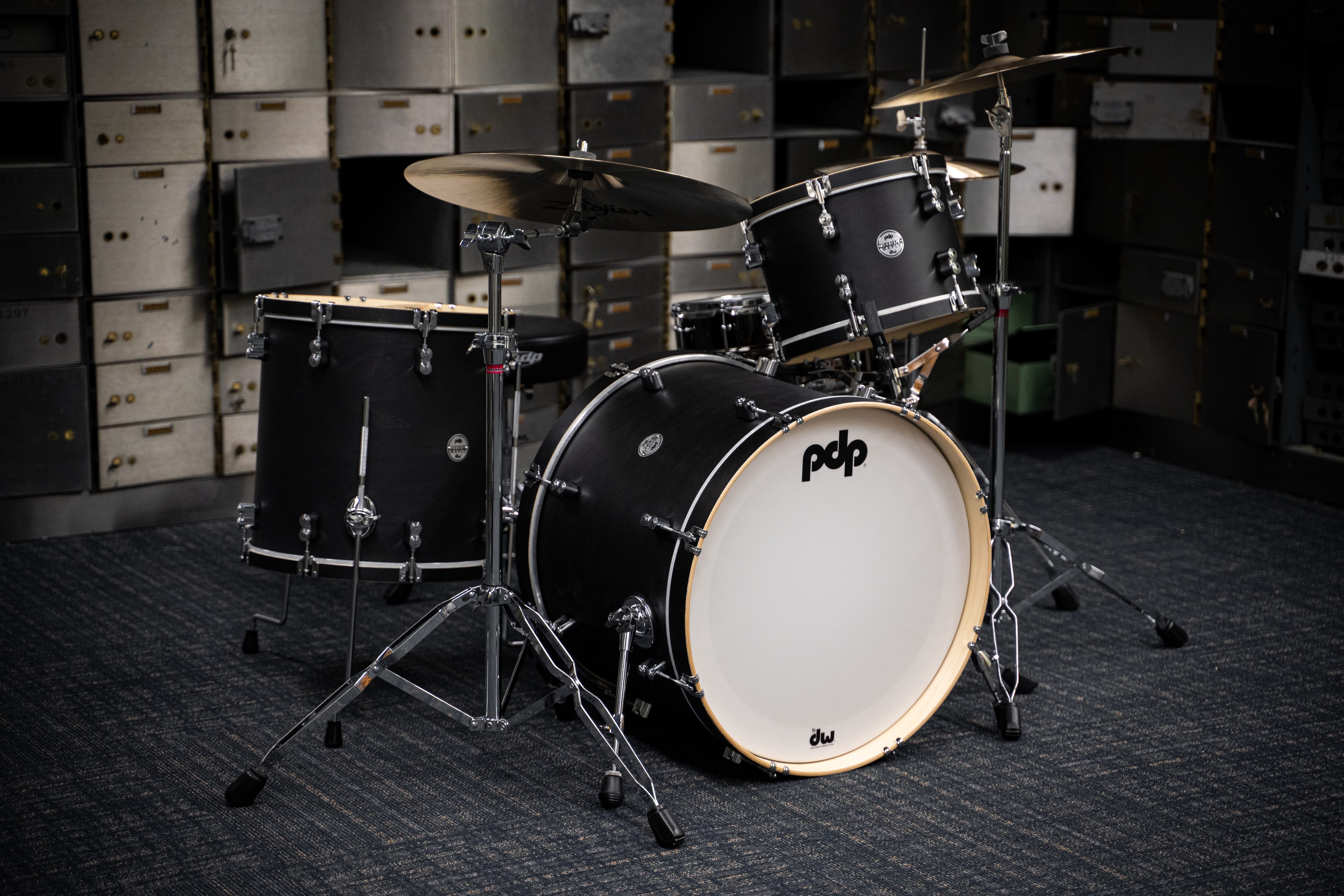 Drum sets also come in different types; the most popular is the acoustic drum set. However, the drum set type has many variations in configurations and size. Most acoustic drum sets feature,
Drum sets also come in different types; the most popular is the acoustic drum set. However, the drum set type has many variations in configurations and size. Most acoustic drum sets feature,
Snare Drum
Positioned right at the center of the drummer, it comes with a highly distinctive cracking sound. There are several other types of this snare drum. Each of these types can produce different styles or types of music.
Bass Drum
The bass drum is another essential aspect of an acoustic drum set. You can operate it using a kick pedal or a beater.
Floor Tom
It is the 2nd largest drum within an acoustic set and is 2nd only to a bass drum. Floor tom has a lower booming sound and features a deep tone.
Rack Tom
This drum within the acoustic drum set has an open sound with a resonator and a defined tone.
Most acoustic sets also come with different mash-ups of other equipment. These include the likes of percussion instruments, pedals, and cymbals. Further types of acoustic drum sets are,
Rock/Power
This acoustic drum set generally comes with 16-inch, 13-inch, or 12-inch toms and 18-inch x 22-inch bass drums. This set features a snare drum that might vary in size, but it will typically be 5.5-inch x 6-inch x 14-inch. This set has a deeper tone and comes with more volume as they have a larger size.
Fusion
This acoustic drum set features 14-inch, 13-inch, and 12-inch in size and has an 18-inch x 22-inch or 20-inch bass drum. This drum set is not as thunderous as the power or rock-sized acoustic set, but they allow quick-playing as they have a faster response rate.
Jazz
This acoustic drum set is pretty light and fast, and they have toms similar in size to fusion acoustic sets. But you will notice they have shallower depths while their bass drum is smaller. You can also explore different variations in terms of configuration.
Electronic and Visual Drum Kits
Electronic drum sets provide you access to a massive library of different sonic options. You go for a bigger electronic kit, and you will get a better option with various sounds. Moreover, you have the option of going percussion and way beyond.
Moreover, you can find these drum sets in different variations ranging from very basic to highly professional. They can also work in different interactive software programs or apps. It means that these programs and apps also provide you with various sounds and tutorials.
Triggers
Triggers enable you to benefit from more options for resonance and feel to your acoustic drum set. These triggers touch the heads of the drums and send a signal to the module or brain to further add more sound capabilities. Plus, these triggers come in handy in live applications to enhance the sound’s overall clarity to your backing tracks.
Aux Drum Set
This drum set provides a complete background for the more adventurous drummers. As a composer, you can add more elements, including chimes, triangles, blocks, bells, and drums, to your music. Aux or auxiliary drum sets are for bands and solo applications, and you can often use them in addition to your drum set.
Hybrid Drum Sets
Hybrid drum sets combine the best acoustic and electronic drum sets. These drum sets come in a range of different forms.
In most cases, drummers create their own hybrid drums according to their needs. They do so by using different drum triggers and drum pads.
These hybrid drum sets can feature different components. These include acoustic drums, electronic drums, hybrid cymbals, drum triggers, percussion pads, electronic samples, drum trigger modules, and other components.
Hand Drum Types
There are other types of drum sets that you can go for as well. Hand drums are a common type of drums. You play them using your hands. Some also work well with triggers and mallets.
Different hand drums originate from different parts of the world, each having a distinctive pattern and unique playing method. Some of the most popular types of hand drums are,
Congas
These drums are tall, and they originate from Cuba. They come in a group of 2 or 3. These drums vary in terms of their sizes. Tumba congas are large, tres dos congas are medium and quinto congas are small in size.
Bongos
These drums have an Afro-Cuban origin, and they are small in size. Bongos are often played in conjunction with congas. The smaller bongos are called macho, while the larger bongos are called hembra.
Tabla
These drums originate from the Indian subcontinent, and you have to play them with the heels of your hands and with your fingers. The smaller variant of this drum is called tabla, while the larger variant is a metal drum, and it is called dagga.
Cajon
It’s a box-shaped instrument that originated in Peru. This type of drum is frequently used in various live acoustic performances. You can play it by striking it with your hand, brush, or drumsticks. But what makes them unique is that you have to sit on them to play them.
Frame Drums
Frame drums are a broad category of drums featuring various rums originating from all across the globe.
Pandeiro
Originating from Brazil, this drum type is played with thumbs, fingers, and palms right on its head and on the jingles or platinelas.
Tambourine
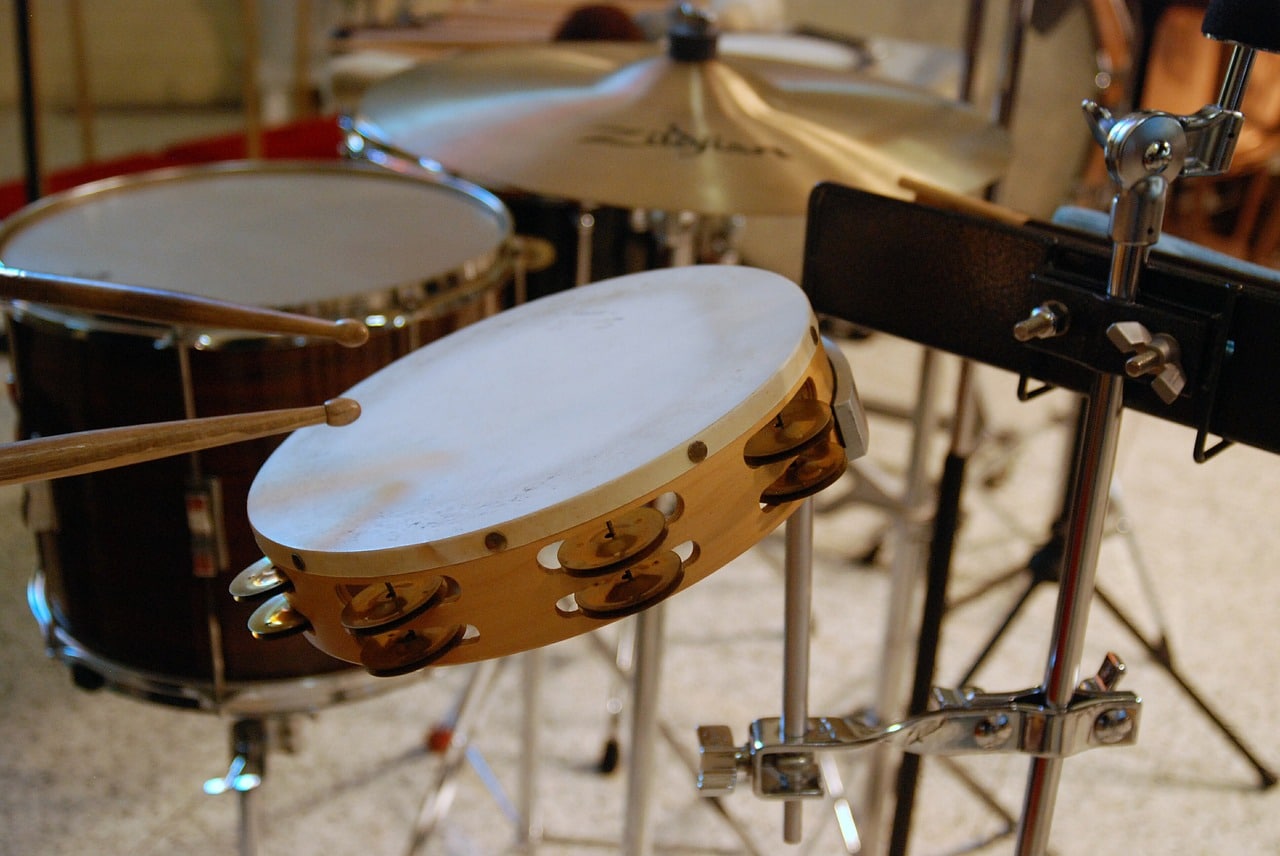 Tambourine is a close cousin of pandeiro and is popular in various other regions but has smaller jingles called zils. This instrument might seem pretty simple to play, but it is so much it can offer.
Tambourine is a close cousin of pandeiro and is popular in various other regions but has smaller jingles called zils. This instrument might seem pretty simple to play, but it is so much it can offer.
It might or might not come iht heads, and you might not be able to tune it either. It can come with a single or double row of jingles.
Bodhran
Bodhran has its Celtic/Irish roots. An instrument that can be played by hand or using different kinds of beaters, also called tippers. This type of drum might or might not be tunable.
Goblet
This drum gets its name due to its shape. It is also called darbuka as it originates from the Middle East. You can conveniently play it with your fingers and thumb.
African Drum Types
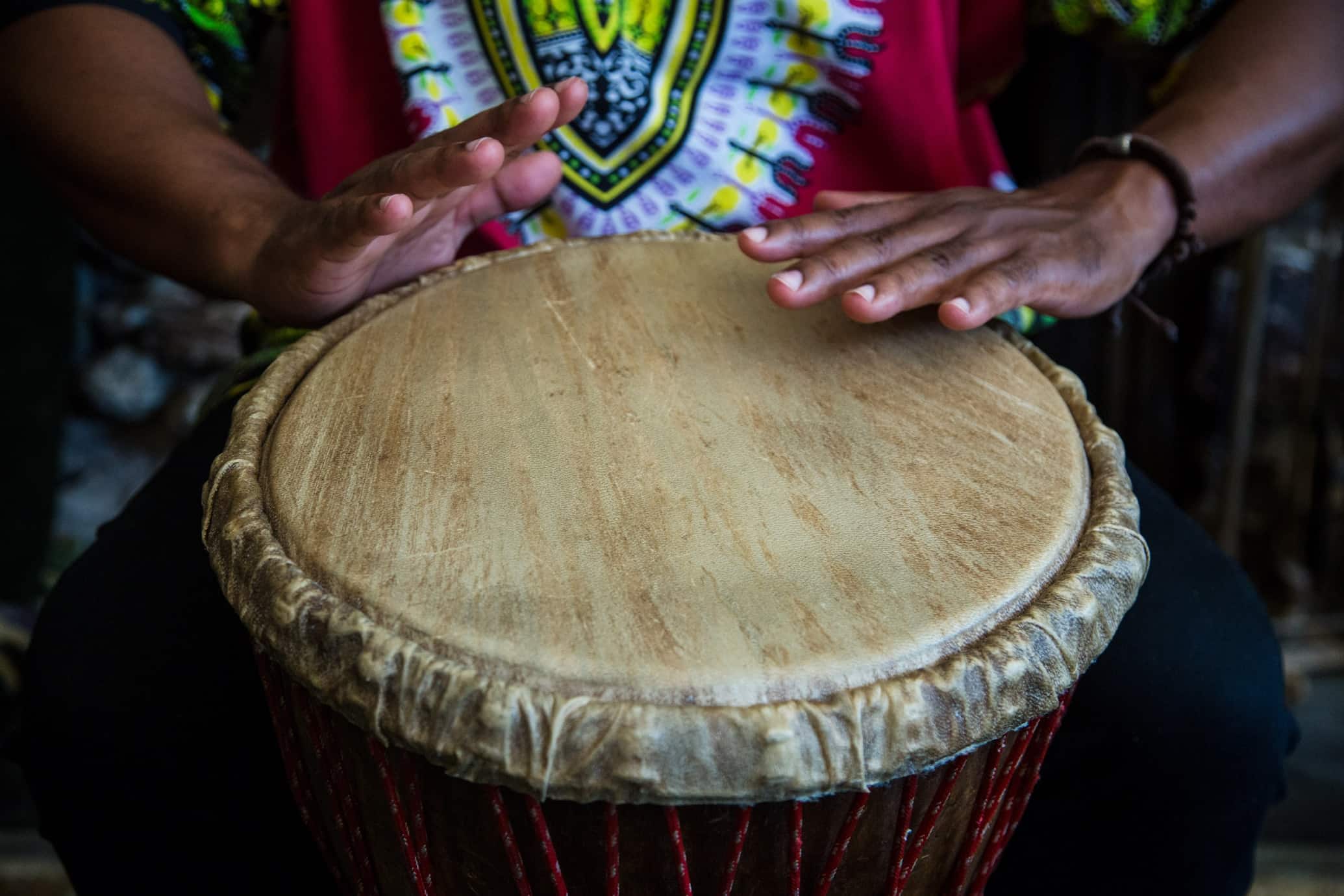 Another braided family of drums similar to hand drums is the African drums. And here are some of the most common types of African drums that you can go for,
Another braided family of drums similar to hand drums is the African drums. And here are some of the most common types of African drums that you can go for,
Djembe
It is a popular type of hand drum that originated in West Africa. This instrument might be rope (African variant) or mechanically tuned (Western variant). They do come with goat skin heads or might also feature synthetic heads.
Talking Drum
To play this instrument Trusted Source talking drum | communication device | Britannica talking drum, any of various types of drums that, by imitating the rhythm and the rise and fall of words in languages, are used as communication devices. Such drums occur in East and West Africa, Melanesia, and Southeast Asia. Five varieties of dùndún pressure drums of the Yoruba and the atumpan and fontomfrom of the Asante (Ashanti) are especially notable. They send messages up to 20 miles (32 km), where other drummers relay them, quickly spreading tribal news. www.britannica.com , you must place it right under your arm and then squeeze its rope as you hit the drum. You can also use the striker to change the pitch.
Udu
It’s a clay-based musical instrument that originated in Nigeria. The instruments have different variations; some might come with one while others come with two chambers. To play this musical instrument, you will have to strike a larger hole using your palm, and you can also use your fingers.
Marching Band Drums
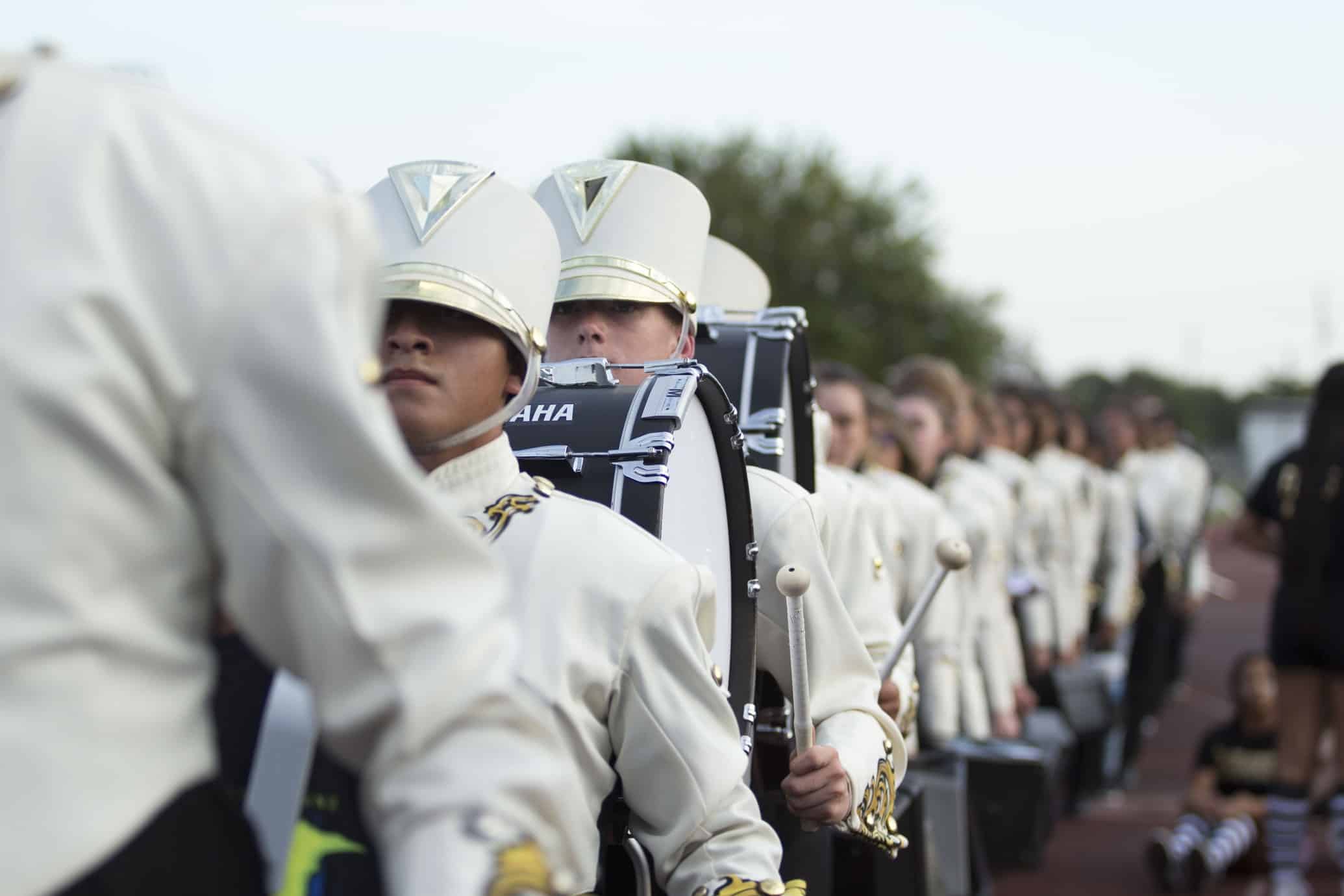 These drums provide the voice for a band, and most of these marching band drums can be mounted on stands and harnesses.
These drums provide the voice for a band, and most of these marching band drums can be mounted on stands and harnesses.
Marching Snare
This drum is different from the regular snare used in the drum set. It has a much deeper sound, and its head is made of Kevlar. As a result, this snare can hold a pretty high tension.
Multi-Tenor
This drum comes in different configurations that mostly range from 4 to 6. These configurations produce high-pitched melodic voices, and you can play the instrument using mallets or sticks. Multi-tenor might feature small drums that are tightly tuned, or they might also feature shots or spocks.
Bass Drum
These drums come with the lowest pitch within the battery. They come in different sizes that you can use for different melodic runs within the line.
Front Ensemble
It is stationary on the field and comes with a wide variety of different percussion instruments. These include Glock, xylophone, marimba, drum set, bass drum, vibes, and timpani. It also includes a range of different aux instruments.
Orchestra Drum
There are different types of drums used in orchestras. They are meant to add layers and different dynamics to a tune. Furthermore, you can use various percussion instruments in addition to these drum types. These include the likes of wind chimes, claves, guitars, and wood blocks. Here are some of the types of these orchestra drums.
Concert Snare Drums
These snare drums frequently used in concerts assist in keeping the rhythm consistently going in orchestras. These instruments have snappy and short beats, and you can play them military style too.
Concert Bass Drums
These drums are mostly played while standing up with the help of a large-sized mallet. These drums are larger than an average bass drum that you will find in a standard drum set. But usually, these drums are around 40-inch in diameter.
Timpani
This musical instrument is one of the most popular kinds of orchestra drums. It features a large-sized drum that is made of copper. You can tune this drum using a foot pedal and strike it with a mallet. This drum is well known for producing high resonating and full sound.
Other Types
There are other types of drums, which are also popular in different parts of the world.
The Hang, Hangpans & Steel Tongue Drums
It’s a group of melodic percussion instruments popular for their rich expression and tone. This interesting piece of the instrument was introduced by PANArt (a Swiss company) back in the year 2000.
And as soon as that happened, many other smaller producers or similar instruments emerged. These miniature instruments are known as handpans. Ordinary observers can refer to all these musical instruments as hang drums.
These instruments are handmade and tend to cost a few thousand of dollars in the region. But beware of any scam artists. Steel tongue drums are another type of drum instrument that has emerged, but it is much cheaper and smaller than handpans.
Still, they are based on a similar layout and tone. Some of these steel tongue drums also come with tuning magnets and an inbuilt piezo mic.
Steelpan
Also known as a steel drum, a steelpan is an exotic type of drum that originated in the Caribbean. These drums can give you some great vibes and are highly versatile, so you can use them to play full melodies.
The sound they produce has become the iconic sound of the Caribbean. These drums have featured in many songs over the years and have been sampled in various music styles.
Ashiko
It is made of goatskin and hardwood and has an open bottom. The instrument is over 11,000 years old and has served as a base for many variations. These include the likes of Brazilian Timbau and Cuban Boku. You have to use hand strikes to produce sound, and Ashiko does come with many modern drums.
Basler
Basler is a Swedish drum with a double-headed design; it is played with drumsticks and is popularly used in the Basel Carnival. More than 2,000 drummers gather to play this instrument in this carnival.
Foot Drum
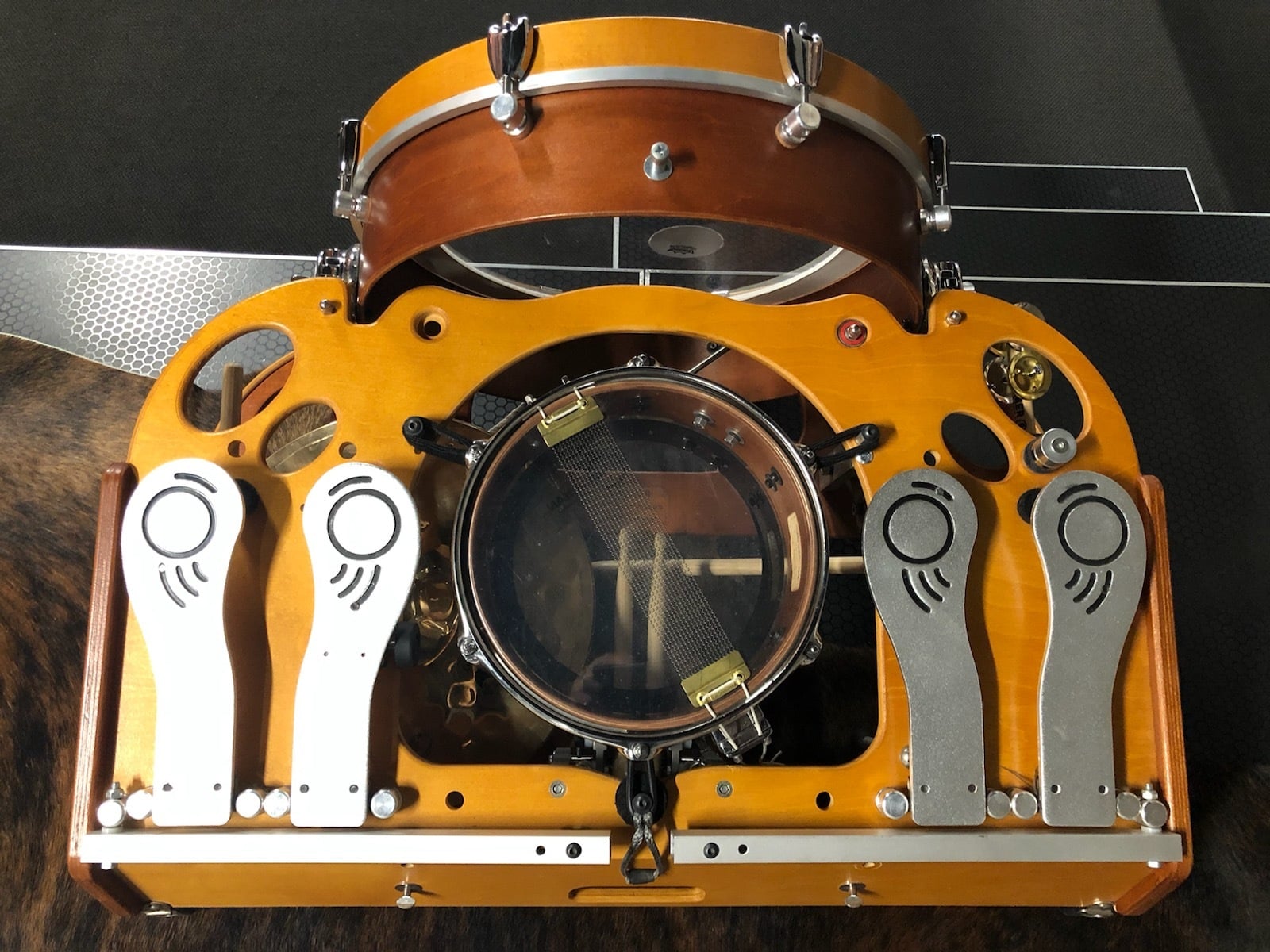 This instrument has a hollowed-out log and is of Native American origin. This drum is common these days, but it was a mainstay in two distinct cultures back in the day; Mexican and Hopi. The logs of these drums were placed on wood pits, creating a deep tone when the players tapped them.
This instrument has a hollowed-out log and is of Native American origin. This drum is common these days, but it was a mainstay in two distinct cultures back in the day; Mexican and Hopi. The logs of these drums were placed on wood pits, creating a deep tone when the players tapped them.
Gong
It’s a type of single-head drum that looks like a gong, and you need a mallet to use to play it. However, you can adjust its tones to create a range of different sounds with this instrument.
Hoop Drum
The hoop drum is the most popular of all Native American drums originating from Tarahumara. It looks like a frame drum but has both sides covered in goatskin. So, as a result, they are way more versatile in their sound output compared to hand drums.
Powwow Drum
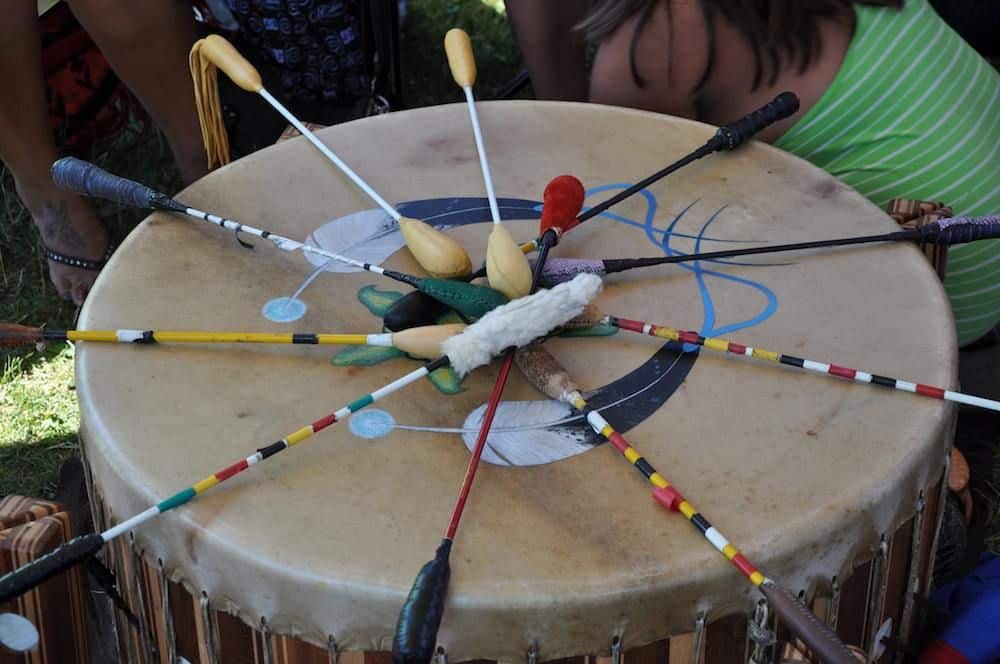 It is another of the most famous Native American drums and was frequently used during the day in large gatherings. This drum is made of buffalo or deer skin. As it has a large size, it could produce deeper tones. This instrument can easily keep the tone of the dance and the song.
It is another of the most famous Native American drums and was frequently used during the day in large gatherings. This drum is made of buffalo or deer skin. As it has a large size, it could produce deeper tones. This instrument can easily keep the tone of the dance and the song.
Spinner Drum
Another of the most unusual Native American drums is the spinner drummer; it is only a few inches wide and normally attached to a pole. Some 2-beaded strikers are attached right at the top, and as soon as you spin the pole, the beads start hitting the rawhide surface. But this drum is commonly considered a children’s instrument.
Tom-Tom
This instrument is not commonly played on its own, but it is a popular component in a drum set. It can vary from 6-inch to 24-inch and resemble a snare drum without snares.
Iroquois
 It’s a water drum and has its Native American roots. Its design features a small wood design with rawhide. To alter the tone, you must add or remove water from the drum. The sound or tone changes due to the wetness of the rawhide.
It’s a water drum and has its Native American roots. Its design features a small wood design with rawhide. To alter the tone, you must add or remove water from the drum. The sound or tone changes due to the wetness of the rawhide.
Yaqui
It is another type of Native American water drum with a gourd cut in half with a water basin. This gourd is placed within the water and struck with the help of a stick. The strike causes water resonation, and it results in sound.
Doumbek
It’s a North African drum that has a religious rhythm. The goblet-shaped drum originated in Egypt and was and still is used for rituals and religious purposes. This drum is made of clay or wood and has animal skin stretched on top with the help of a rope, leather things, or nails.
You can play it comfortably under your arm or place it on your leg. There is an Egyptian style with rounded edges that look just like a tabla and a Turkish style called a Darbuka. This instrument can produce three different sounds: bass, Tak, and Ka.
Ngoma Drum
Judging by the looks, these drums resemble Congas and originate from Africa. These drums were used in traditional rituals and ceremonies. This instrument is made of wood and features cow skin that is used to cover its upper section. This instrument signifies particular dances, social events, and rhythms.
Dhol
It is a generic name for any double-headed barrel drum with stretched raw skin. You play its one end with a thicker stick, producing a lower-pitched sound. The other end is tuned higher, and you can play it with a thinner stick. With these differences, you can create some highly rhythmic and very interesting melodies.
China Cymbal
Back in the 1900s, when the early percussion musicians were starting to use their own drum sets, they were always on a hunt for ways to pass exciting and new sonic textures to their drum set or percussion setup.
At that time, the available cymbals were either Chinese or Turkish. As a result, Chinese cymbals were more misshapen in sound compared to their Turkish counterparts. But today, a typical Chinese cymbal is a standard crash cymbal that just turned inside out and featured turned-up edges with a taller protruding bell.
It has a large hammering pattern and can give off a sharp but short and aggressive sound that is loud in volume. As a result, this symbol has become pretty popular for musicians looking for this type of sound in their tones.
Taiko Drums
Taiko is the generic name for Japanese drums. However, these drums are large wooden barrels outside this country that look like acoustic drums. They are used in Wakaido (a choreographic act of Taiko drumming).
These drums are pretty large, and at times they are over 2 meters tall. They are played with large, thick drumsticks and have low thunderous quality.
Conclusion
As you can see, musicians use many different types of drums worldwide. Many of them have been variations that composers have used to create their tones, and they have become popular in their regions.
Still, there have been many different kinds of drums over the years, and they have been serving different purposes as well. From recreation to military use, drums are the percussion instruments that are relatively easy to learn and master. They become the base of various tones.










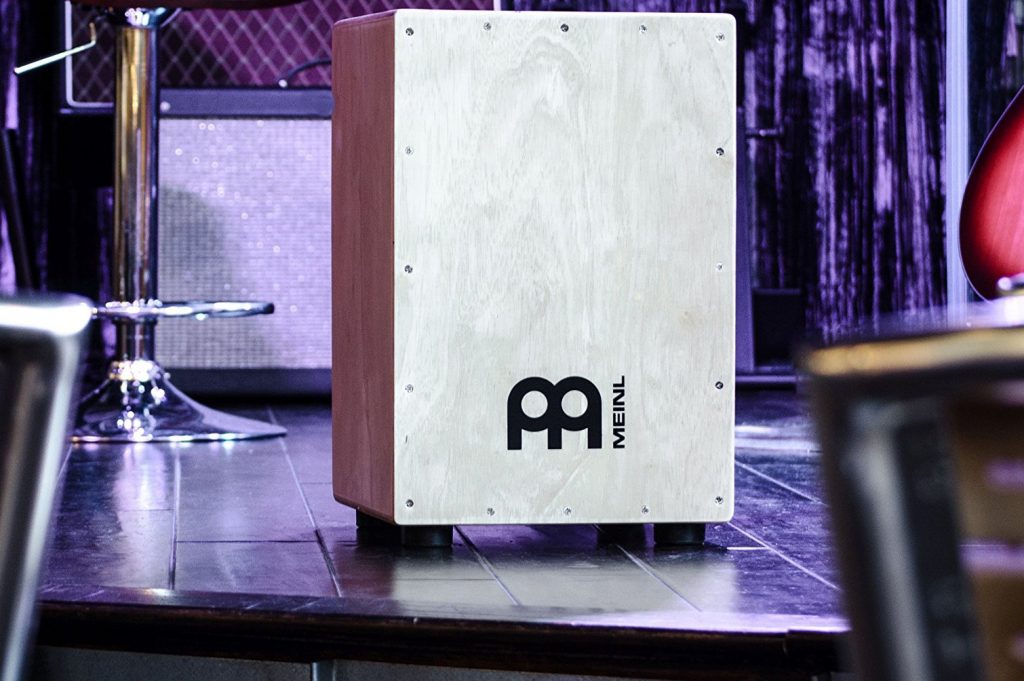
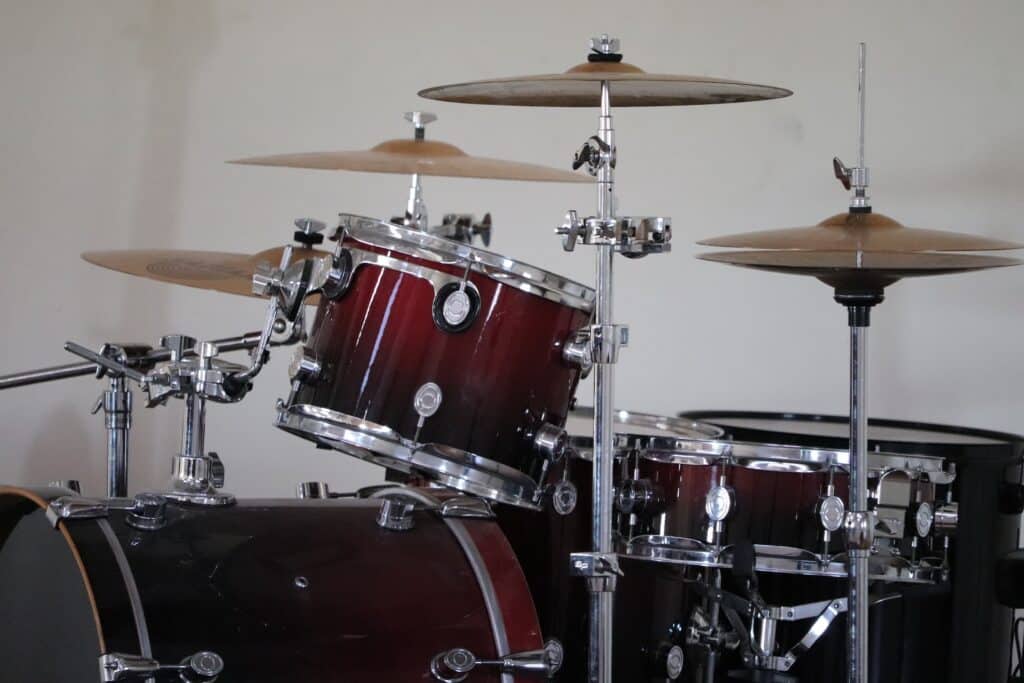
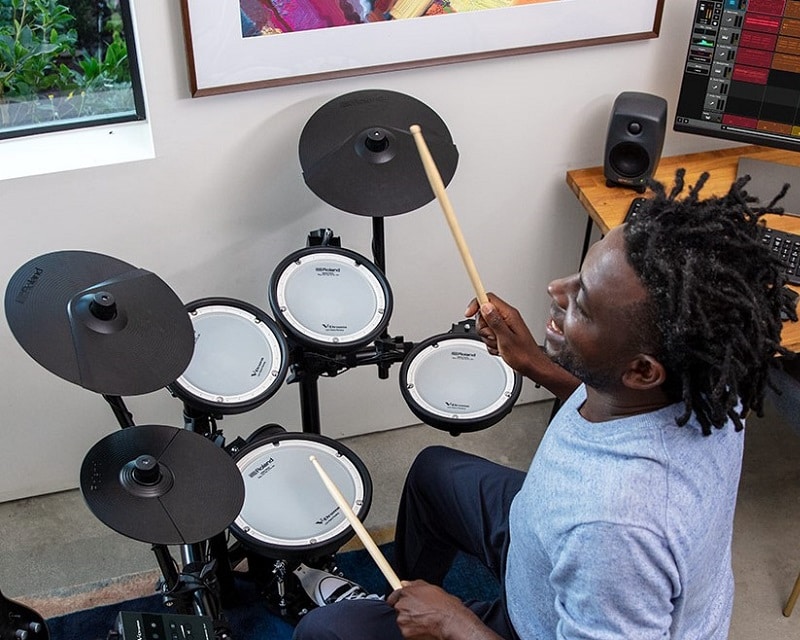

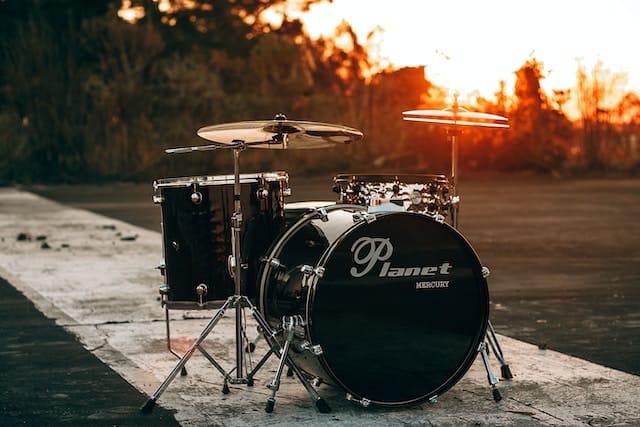
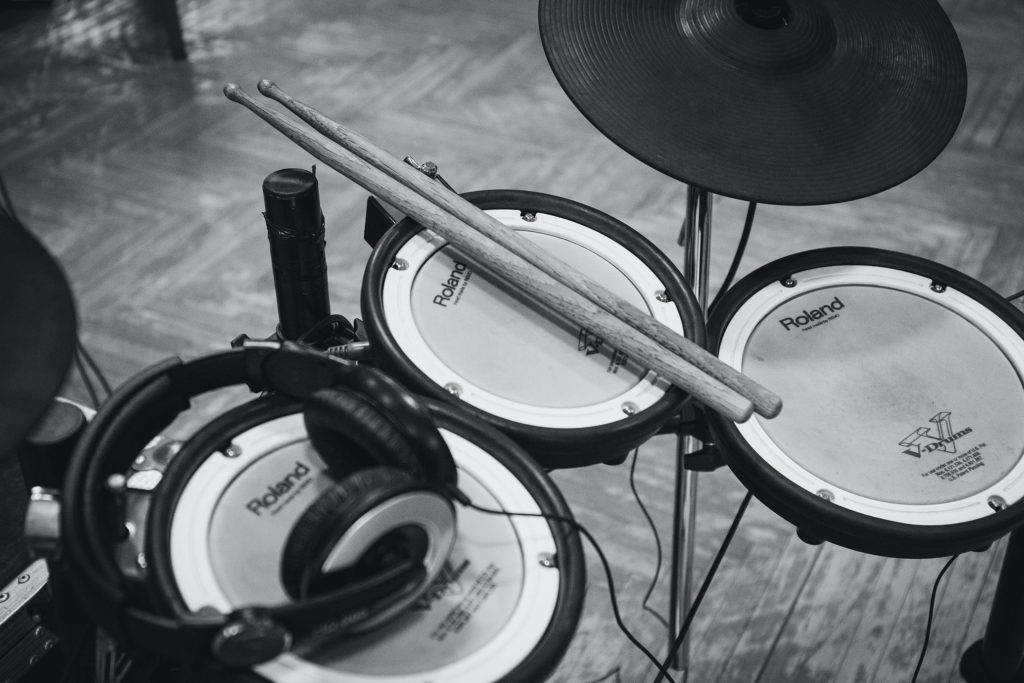
Great post! I’ve always been fascinated by the different types of drums out there. Your in-depth guide has really helped me understand the nuances between acoustic, electronic, and hybrid drums. I especially found the section on drumming techniques for each type to be super helpful. Thank you for sharing your expertise!